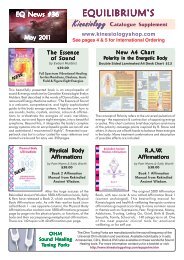You also want an ePaper? Increase the reach of your titles
YUMPU automatically turns print PDFs into web optimized ePapers that Google loves.
HIST19 Corpus Luteum<br />
Endocrine gland in ovary formed when ovum discharged; if the ovum impregnated, the corpus luteum<br />
increases in size and persists for several months, (secretes estrogens, progesterone, relaxin and inhibin);<br />
otherwise degenerates and shrinks.<br />
HIST20 Duodenum<br />
The first part of the small intestine connecting the stomach and the ileum.<br />
HIST 21 Epididymis<br />
The duct in which sperm undergo maturation.<br />
HIST22 Esophagus<br />
The muscular tube through which food passes from the throat to the stomach.<br />
HIST23 Fallopian Tube<br />
The tube through which eggs pass from the ovaries to the uterus.<br />
HIST24 Gallbladder<br />
The pear-shaped organ found below the liver that concentrates and stores bile.<br />
HIST25 Hippocampus<br />
Part of the limbic system of the brain, involved in emotions and memory.<br />
HIST26 Ileum<br />
The last part of the small intestine.<br />
HIST27 Intervertebral Disk, Fibrous Cartilage Spinal Disc<br />
HIST28 Jejunum<br />
Portion of the small intestine that extends from the duodenum to the ileum.<br />
HIST29 Kidney<br />
A pair of organs which function to filter the blood and control the level of some chemicals in the blood such<br />
as hydrogen, sodium, potassium, and phosphate; they eliminate waste in the form of urine.<br />
HIST30 Kidney Cortex<br />
One of the main functional parts of the kidney (outer zone).<br />
HIST31 Kidney Medulla<br />
One of the main functional parts of the kidney (inner zone) containing the renal pyramids.<br />
HIST32 Liver<br />
The largest organ in the body; carries out many important functions, e.g. making bile, changing food into<br />
energy, and cleaning alcohol and poisons from the blood.<br />
HIST33 Lung<br />
Main organ of respiration, lying either side of heart.<br />
HIST34 Lymph gland/ lymph node<br />
Lymph nodes filter lymph and store lymphocytes (white blood cells).<br />
HIST35 Mast Cell<br />
Produce histamine, which dilates small blood vessels; involved in body’s reaction to injury and infection.<br />
HIST36 Medulla Oblongata<br />
Lower part of brain stem; controls autonomic functions; relays nerve signals between the brain and spinal<br />
cord.<br />
HIST37 Muscle, Involuntary<br />
Smooth muscles not ordinarily under the control of the will, activated by the autonomic nervous system.<br />
HIST38 Muscle, Voluntary<br />
Muscle that can be made to contract or relax by conscious control.<br />
HIST39 Nerve<br />
A bundle of fibers that uses electrical and chemical signals to transmit sensory and motor information from<br />
one body part to another.<br />
Page 72 Copyright Jane Thurnell Read 2012 Testing Kit Description Manual



